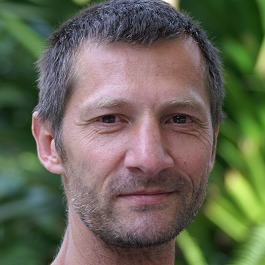Plant Succession and Vegetation Dynamics
A special issue of Diversity (ISSN 1424-2818). This special issue belongs to the section "Plant Diversity".
Deadline for manuscript submissions: 30 June 2024 | Viewed by 3186
Special Issue Editors
Interests: mangrove ecology; high mountain research; vegetation dynamics; plant ecology; plant diversity; vegetation geography
Special Issues, Collections and Topics in MDPI journals
Special Issue Information
Dear Colleagues,
Plant cover on earth is changing continuously on different temporal and spatial scales. Those changes can be very obvious or rather inconspicuous, they can occur as sudden events or as gradual shifts, they can be locally restricted or global phenomena and they can be effective on different time scales from weeks to thousands of years. Thus, changes in plant cover on earth encompass wide spatio-temporal spectra and also the reasons for their emergence are manyfold.
Processes of directional change in species composition and vegetation structure with time are referred to as succession, a fundamental, but controversially discussed concept in plant community ecology and vegetation geography ever since early accounts in the 19th and 20th century by pioneers such as Adolphe Dureau de la Malle, Eugen Warming, Henry Cowles, Frederic Clements or Henry A. Gleason. Directional succession, however, is just one part of vegetation dynamics. There exists a broad variety of additional processes and patterns of vegetation change in both, space and time such as mosaic cycles, gap dynamics or cohort dynamics following diebacks. A better understanding of successional pathways, the processes involved and vegetation dynamics in general is crucial in times of rapid environmental change and increasing frequency and intensity of natural and man-made disturbances, as it has important implications for ecosystem restoration and overall vegetation management.
This Special Issue aims at highlighting and showcasing recent findings and advances in the study of plant succession and vegetation dynamics. Case studies from all plant communities on earth are welcome, as are comparisons between different plant communities. Methods employed may include, but are not limited to, permanent plot studies, chronosequence approaches, manipulation experiments, remote sensing techniques and modelling, to cover a broad range of spatial and temporal scales as well as potential underlying reasons in vegetation dynamics today.
Dr. Thomas Fickert
Prof. Dr. Michael Richter
Guest Editors
Manuscript Submission Information
Manuscripts should be submitted online at www.mdpi.com by registering and logging in to this website. Once you are registered, click here to go to the submission form. Manuscripts can be submitted until the deadline. All submissions that pass pre-check are peer-reviewed. Accepted papers will be published continuously in the journal (as soon as accepted) and will be listed together on the special issue website. Research articles, review articles as well as short communications are invited. For planned papers, a title and short abstract (about 100 words) can be sent to the Editorial Office for announcement on this website.
Submitted manuscripts should not have been published previously, nor be under consideration for publication elsewhere (except conference proceedings papers). All manuscripts are thoroughly refereed through a single-blind peer-review process. A guide for authors and other relevant information for submission of manuscripts is available on the Instructions for Authors page. Diversity is an international peer-reviewed open access monthly journal published by MDPI.
Please visit the Instructions for Authors page before submitting a manuscript. The Article Processing Charge (APC) for publication in this open access journal is 2600 CHF (Swiss Francs). Submitted papers should be well formatted and use good English. Authors may use MDPI's English editing service prior to publication or during author revisions.
Keywords
- vegetation dynamics
- succession
- mosaic cycles
- gap dynamics
- cohort dynamics
- colonization
- propagule dispersal pathways
- species turnover
- ecosystem functioning
- conservation
- natural regeneration






